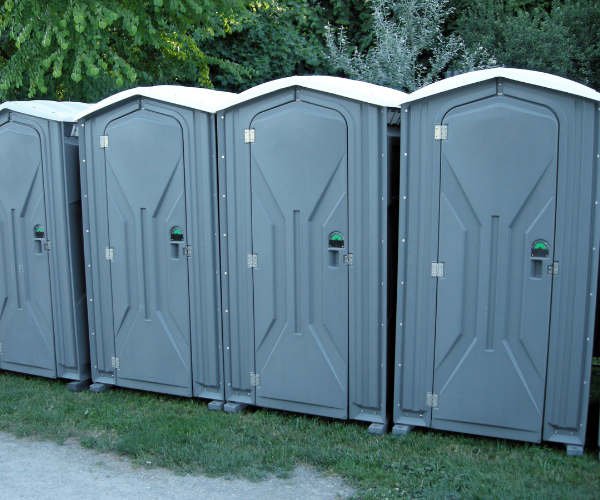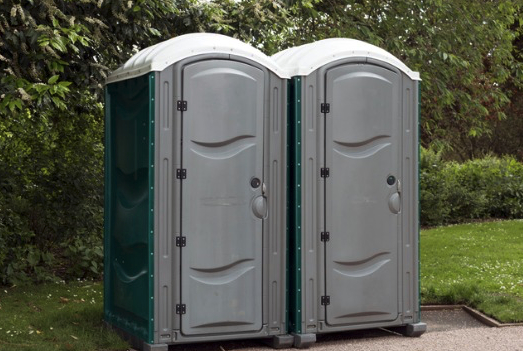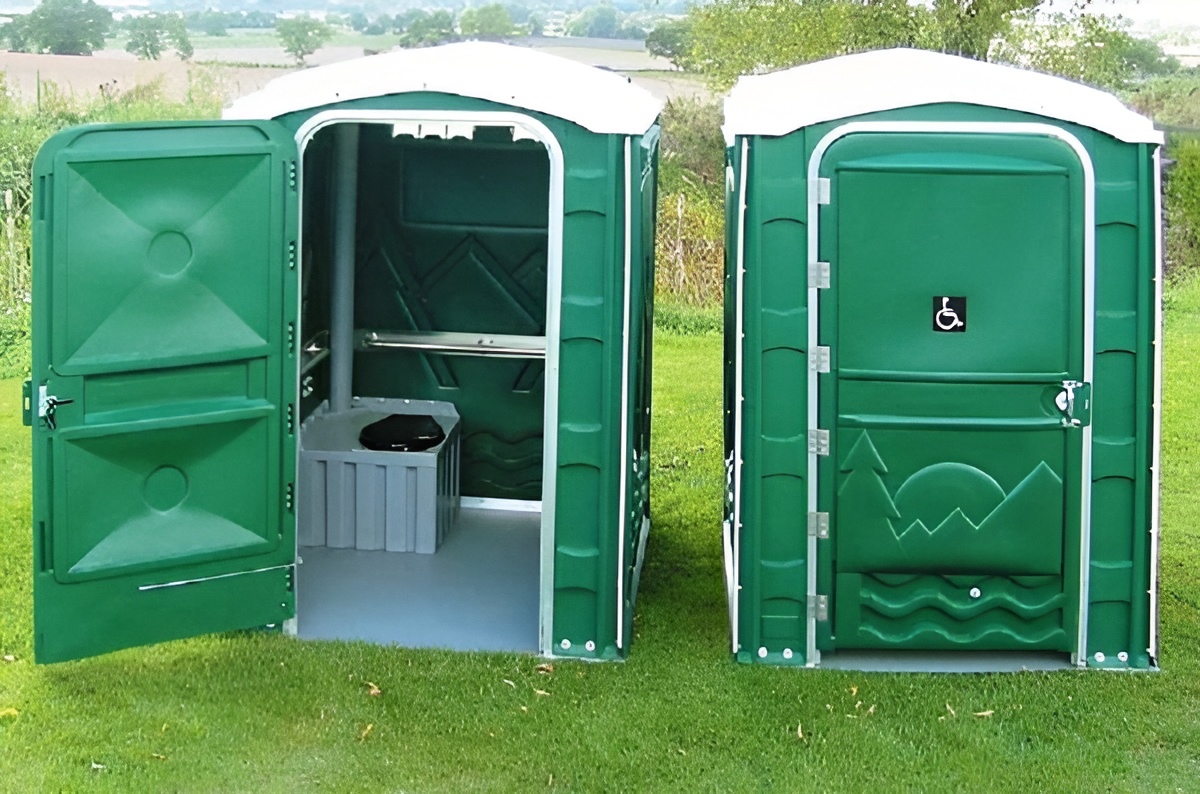Portable toilets offer significant eco-friendly benefits, reducing the environmental impact typically associated with traditional restroom facilities. One of their primary advantages is water conservation; these units use minimal water compared to conventional toilets. This is achieved through their design, which requires less water for flushing. Additionally, portable toilets diminish the need for permanent infrastructure, decreasing potential land disturbance and allowing for easy installation and removal at events and construction sites.Moreover, the use of biodegradable materials in some units helps reduce waste and supports sustainable practices. Many portable toilets incorporate eco-friendly cleaning chemicals that break down waste efficiently without harming the environment. By using portable toilet services, companies and events can showcase their commitment to sustainability, often aligning with organizations' green goals and regulatory standards.Portable toilets are also designed to capture waste in sealed tanks, preventing leaks and contamination of surrounding areas. This capability ensures that sanitary conditions are maintained, protecting public health and natural resources. Furthermore, the logistics involved in servicing portable toilets, such as route and frequency optimization, contribute to reduced carbon footprints by minimizing fuel consumption and associated emissions.Events and construction sites that choose portable toilets not only communicate an investment in efficient waste management but also a dedication to environmentally responsible practices. Advocating for sustainable choices, these facilities offer an effective means of managing sanitation needs while significantly reducing ecological impacts. Trusting a reputable provider, like LittleJohn Toilets, further ensures that these green advantages are maximized and tailored to meet the specific demands of clients and their unique projects. Embracing this approach ultimately contributes to a healthier planet while maintaining high hygiene and operational standards.

Portable Toilet Rentals in Westminster, South Carolina
Call today for a free quote (864) 477-7907
Portable Toilet
Fast, Easy, & 100% Free To Get Started
Over 20 Years of Experience
With more than 20 years of experience, LittleJohn Toilets stands as a trusted name in Westminster. Our deep community connections and commitment to quality consistently allow us to exceed customer expectations.
Committed to Quality Service
At LittleJohn Toilets, we excel in providing superior portable toilet services. We prioritize quality by maintaining clean, well-kept units, ensuring outstanding customer satisfaction every time.
Fast & Reliable Delivery
LittleJohn Toilets delivers with speed and reliability, ensuring your portable toilet needs are met promptly through our efficient logistics. Count on us for dependable service.
Convenient Portable Toilets in Westminster
Call for a Free Quote Today
(864) 477-7907
At LittleJohn Toilets, we pride ourselves on being a locally owned and operated company providing dependable and reliable portable toilet services in Westminster, South Carolina. Our commitment to quality and customer satisfaction sets us apart, ensuring clean and convenient restroom solutions for any event or construction site. We excel in delivering exceptional service for occasions such as construction sites, private parties, concerts, festivals, and weddings throughout Westminster and nearby areas. Our comprehensive range of products and prompt service guarantees a hassle-free experience, making LittleJohn Toilets the preferred choice for your portable restroom needs.


Our standard porta john rental units are durable and reliable for any commercial build site, housing development, public works project, or remodel job.Features include dome lighting, grated floors, and an “In-Use” locking mechanism for privacy and comfort. Regularly maintained, inspected, and cleaned by FusionSite at your location.

Developed as an alternative to full ADA-compliant restrooms, the Liberty is a spacious, wheelchair-accessible unit that can also be promoted as a family-sized restroom. Includes a patented flat-floor system for easy wheelchair access and maneuverability.Handrails, paper holder, and rotary latch are designed for simple, intuitive end-user operation.

Portable hand washing stations are essential for keeping your work site sanitary and clean. Features hands-free foot pumps, liquid soap, and paper towels.Perfect for job sites without water hookups, these units can handle hundreds of washes between services.
We Proudly Serve
Standard Portable Toilets
Our Standard Portable Toilets offer comfort and convenience for any event or construction site across South Carolina.
High Rise Portable Toilets
Efficient High Rise Portable Toilets designed for construction sites in Westminster, ensuring safe and reliable use at any height.
Restroom Trailers
Our Restroom Trailers add elegance and comfort to any event in Westminster, perfect for weddings and corporate functions.
Roll off Dumpsters
Offering reliable Roll off Dumpsters in Westminster for efficient waste management at various locations through LittleJohn Toilets.
Septic Tank Cleaning
Reliable Septic Tank Cleaning services at LittleJohn Toilets, ensuring sanitation systems run smoothly across South Carolina.
Grease Trap Cleaning
Professional Grease Trap Cleaning service in Westminster by LittleJohn Toilets, maintaining hygiene and efficiency in local establishments.
Fencing & Barricades
Secure Fencing & Barricades from LittleJohn Toilets, offering safety and organization in South Carolina's various events and sites.
Residential Storage
Trustworthy Residential Storage solutions at LittleJohn Toilets in Westminster, providing extra space and peace of mind.
Westminster Portable Toilet Services
Getting a quote and scheduling a delivery for a portable toilet has never been so easy and convenient. At LittleJohn Toilets, we understand the importance of having clean, reliable facilities at your event or worksite, and we aim to make the process seamless for our clients. Simply fill out a short form with your details, including first name, last name, phone number, and email, either at the top or the bottom of our webpage, and we will provide a fast, competitive quote tailored to your specific needs. Alternatively, you can use the 'Get A Quote' buttons, which are conveniently located throughout our website, to start the process immediately. We pride ourselves on transparent pricing, so you know exactly what you are getting and at what cost.Once you receive your quote, finalizing your order is straightforward, ensuring you get your portable toilets delivered exactly when and where you need them, whether for an upcoming festival, wedding, or construction project. Our team is dedicated to providing timely and responsive customer service, taking the stress out of last-minute adjustments and ensuring each unit is delivered clean, on time, and ready for use. As a trusted provider in Westminster, we accommodate all your needs with efficiency and professional service, making LittleJohn Toilets the go-to choice for portable sanitation solutions.Our network and logistics are designed to handle large and small orders, offering flexibility and reliability for any occasion. We offer competitive rates and equally competitive service throughout Westminster and its surrounding areas, demonstrating our commitment to high-quality, environmentally-responsible solutions. Join the many satisfied customers who have benefited from our precise and customer-oriented approach to portable toilet rentals. With LittleJohn Toilets, you know you're in good hands.

Located in the heart of Westminster, LittleJohn Toilets is the go-to provider for portable toilet rentals that combine convenience with local appeal. Whether you're planning an event near Westminster's beautiful parks or hosting a community gathering at the annual Apple Festival, we provide clean, reliable services that enhance any event. Our commitment to our local community shines through in everything we do, offering personalized service that aligns with Westminster's close-knit atmosphere. With a deep understanding of local attractions and seasonal events, like the popular Mayberry Days tribute, we ensure our services are always on point, allowing you to focus on the enjoyment of your guests. Our portable toilets are perfect for the wide variety of community events held throughout the year, from bustling festivals to intimate weddings. We tailor our offerings to reflect the character and needs of Westminster, showcasing not just our dedication to quality, but also to environmental sustainability. When planning your next event or construction project, consider LittleJohn Toilets as your partner in sanitation. With a range of units designed to suit any occasion, our portable toilets offer unmatched convenience and reliability, ensuring a smooth experience every time. Trust us to provide the services you need to keep your guests comfortable and your event running smoothly.
LittleJohn Toilets is the premier choice for portable toilet services in Westminster, driven by our steadfast commitment to customer satisfaction and community involvement. We provide a range of products perfectly aligned with the unique needs of the area, from outdoor events to local festivals. Our portable toilets are renowned for their cleanliness and durability, making us the preferred option for various occasions.Our dedication to the Westminster community shines through in our customized service offerings and deep understanding of local requirements. We take pride in our efficient delivery and responsive customer service, ensuring every encounter with us adds value to your event. Choose LittleJohn Toilets for dependable, customer-focused service that enhances any event in Westminster.
At LittleJohn Toilets, we excel in offering fast and reliable portable toilet services to meet the varied needs of Westminster's residents and businesses. Our logistics network ensures prompt delivery, regardless of the scale or location of your event or project, with an unwavering focus on timely service and satisfaction.We understand that reliability is paramount, and our dedication to this principle guarantees that you can always count on us to meet your deadlines. Offering a range of portable sanitation solutions, our professional team is committed to maintaining high operational standards, ensuring that every unit is delivered clean and ready for immediate use.From special events to construction sites, LittleJohn Toilets provides efficient, dependable service that enhances the experience of your guests or workforce. Partner with us to enjoy peace of mind, knowing that your portable toilet needs are handled by experts in the industry, committed to excellence and fast service.
Discover Our Portable Toilet Services in Westminster
Renting a portable toilet in Westminster is a streamlined process when you opt for the reliable services of LittleJohn Toilets. Start by visiting our user-friendly website, where you can find easy-to-navigate forms located at both the top and bottom of our pages. These forms are designed to capture essential information, including your first name, last name, phone number, and email, to promptly provide a precise quote tailored to your requirements.Our 'Get A Quote' buttons are strategically placed throughout the website, allowing for an immediate and hassle-free start to your portable toilet rental journey. Once you have requested a quote, our responsive customer service team will swiftly follow-up, offering competitive pricing and solutions that fit your specific needs.From intimate gatherings to large-scale events, our wide selection of portable toilets can accommodate any occasion, enabling you to provide clean, convenient sanitation facilities for your guests or workforce. Trust LittleJohn Toilets to deliver both quality and reliability, ensuring your rental experience is smooth from start to finish.After you finalize your rental, our efficient delivery team handles everything from coordination to installation, adapting to your schedule and site-specific requirements. Flexibility and client satisfaction are at the core of our operations, so whether it's a last-minute order or a large festival, you can count on our professionalism to meet your needs.Choose LittleJohn Toilets for your portable sanitation solutions in Westminster, where excellence in service and ease of rental experience combine to make your event or construction project a success. Discover why we are the preferred provider for portable toilets in the region.
When ordering portable toilets from LittleJohn Toilets, an efficient and prompt delivery is what you can expect. Our typical delivery timeframe is designed to accommodate a variety of needs, ensuring that your units arrive when and where they are needed most. Standard orders are usually fulfilled within 24 to 48 hours; however, our dedicated team is often able to provide even faster service for urgent requests, thanks to our streamlined logistics and responsive coordination.Our commitment to swift delivery involves meticulous planning and real-time communication with clients, allowing us to adapt our schedules quickly when changes arise. This flexibility is crucial, especially for clients who manage numerous events or construction projects with evolving timelines and requirements.Upon receiving your order, our experienced staff confirms all logistical details, prepares the units for transport, and contacts you with expected arrival times. This approach ensures transparency, reducing the stress of managing last-minute adjustments and guaranteeing that your sanitation needs are met seamlessly.Clients can also rest assured knowing that our delivery personnel are trained professionals who understand the importance of timeliness while maintaining high standards for unit installation and condition. Each portable toilet arrives clean, fully stocked, and ready for immediate use, reflecting our dedication to customer satisfaction.By trusting LittleJohn Toilets for your portable toilet services, you gain access to not just products but the assurance of reliable and efficient delivery that accommodates your specific demands and enhances the success of your event or project. Experience why our clients rely on us for outstanding service and swift delivery tailored to their unique needs.
Yes, we specialize in servicing a wide array of events and construction project needs with our diverse lineup of portable sanitation and related services. Whether you are hosting a festival, a sporting event, or a private wedding, LittleJohn Toilets has the products and expertise to ensure the success of your event. Our comprehensive offerings include luxury restroom trailers, sleek porta potties, and efficient roll-off dumpsters that cater to both comfort and practicality.In addition to these essential units, we provide a full suite of services like portable sinks, hand sanitizer stations, ADA-compliant units, and secure fencing and barricades to enhance the safety and hygiene standards of your venue. Our expertly managed solutions ensure efficiency and adaptability, crucial for managing large crowds or sensitive outdoor environments.Our commitment extends to corporate events and family reunions, where our clean and convenient facilities match the level of sophistication and functionality demanded by such gatherings. Each unit is meticulously maintained, promising reliability and cleanliness for every guest.Construction sites also benefit from our durable holding tanks designed to meet rigorous industrial demands while providing environmental safety and compliance. With flexible service terms and a quick response approach, LittleJohn Toilets is equipped to support long-term construction projects.Choose us as your portable sanitation partner and experience the difference in quality and service. We take pride in adapting to various settings, customizing solutions to fit each specific requirement, and upholding the highest standards in the industry for event and job site management. Explore the possibility of elevating your next project or event with LittleJohn Toilets and discover the peace of mind that comes from working with industry leaders.

